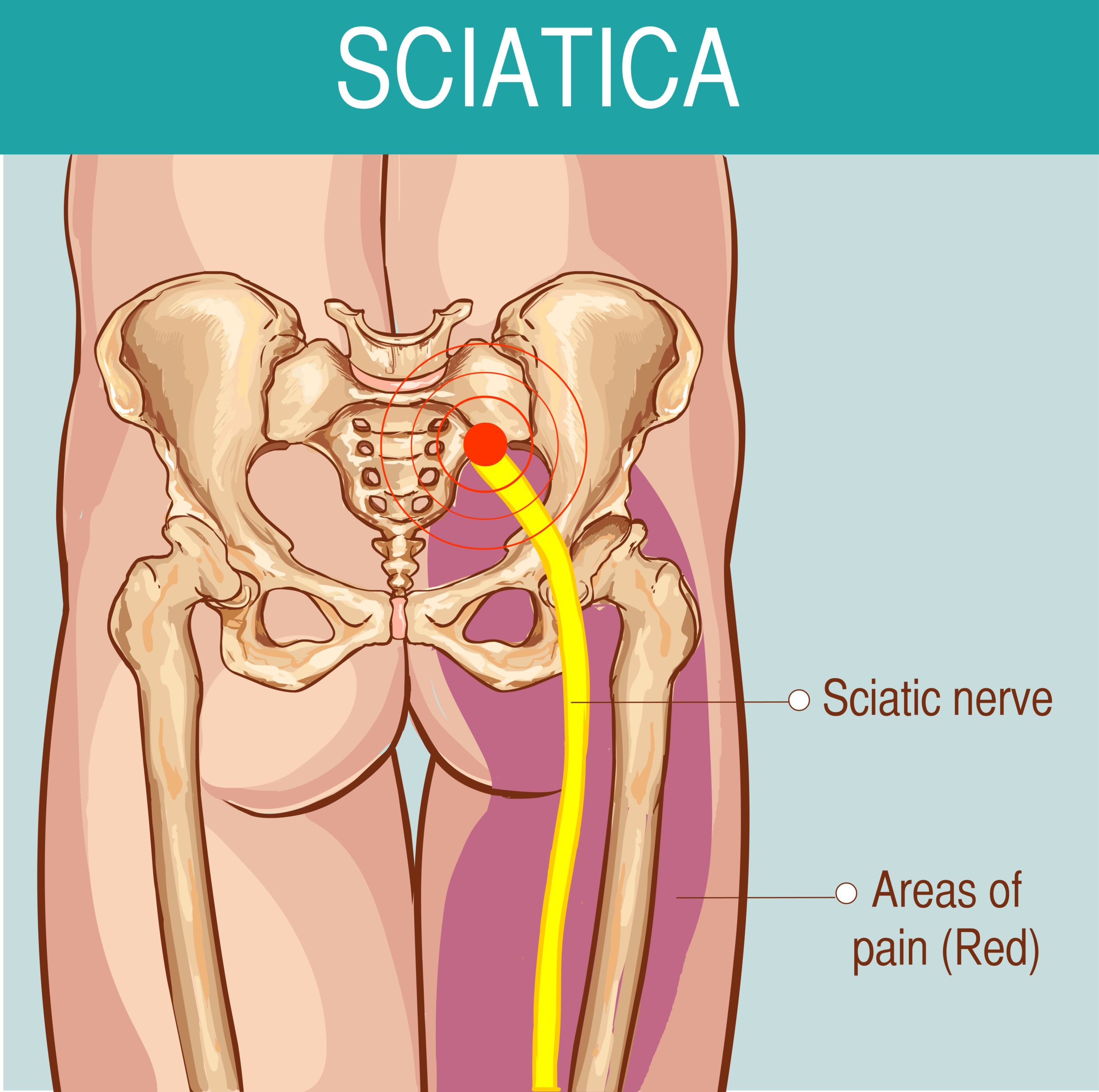Sciatica refers to pain that radiates along the sciatic nerve, typically starting around your lower back and down to the hips, buttocks and eventually each leg. It usually only affects one side of the body and most commonly occurs when something compresses a part or many parts of the sciatic nerve. Sciatica can be treated with medication, stretches and, most importantly, physical therapy.
A physical therapist will design a rehabilitation program to reduce or eliminate your pain, normalize body mechanics to alleviate compression of the nerve, improve strength of core muscles, improve flexibility of muscles and nerves (yes, nerves), and optimize functional activities. A home exercise program will also be designed and is a key element of the rehabilitation process.
Manual therapy techniques and stretching may be able to reduce compressive forces on the nerve caused by things like hip joint dysfunction, muscle spasm, etc… Strengthening the spinal column and the supporting tendons, and muscles can also help relieve some sciatic pain. Strong core muscles will reduce pain because they support the spine and keep it in alignment, thereby minimizing the chance of experiencing sciatica in the future.
Stretching is also suggested and is designed to target muscles that cause pain when they’re tight and inflexible. Stretching the nerves are also important, as the sciatic nerve is designed to glide freely between muscles, fascia, and other structures in the body. Nerve stretching exercises are commonly referred to as “nerve glides” or “neural flossing” and are usually a key component of rehabilitation of sciatica.
Another treatment that can help with sciatica is low-impact aerobic exercises such as walking, swimming or pool therapy. Aerobic activity encourages the exchange of fluids and nutrients to help with the recovery. Aerobic conditioning is known to release endorphins, which are the body’s natural painkillers.
So the answer is yes – physical therapy can absolutely help with sciatica!
One of the biggest myths about sciatica pain is that you should rest and let your body naturally heal. In most cases, a day or two of rest is fine, but actually stretching and working out the parts of the body that are hurting can reduce pain. That is why physical therapy is a great solution for combating sciatic pain. Working with your physical therapist to figure out the best movements and stretches to deal with your specific areas of pain can be life-changing.
Ready to face your sciatic nerve pain head on? Contact the team at Momentum Physical Therapy; we have locations throughout San Antonio and the surrounding areas to help you get healthy!






